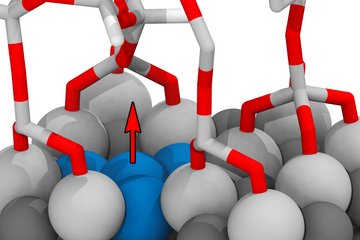All genres
281.
Talk
Joint crystallographic and chemical characterization at the nanometer scale by correlative TEM and atom probe tomography. Workshop: White-etching layers in ball and roller bearings, Informatik-Zentrum Hörn, Aachen, Germany (2014)
282.
Talk
Texture and microstructures of thin film solar cells. Autumn School on Microstructural Characterization and Modelling of Thin-Film Solar Cells, Potsdam, Germany (2014)
283.
Talk
Characterization and modeling of the propagation of creep dislocations from the interdendritic boundaries in single crystal Ni base superalloys. International Workshop on Modelling and Simulation of Superalloys, Bochum, Germany (2014)
284.
Talk
GND Analysis of a Copper Micro Cantilever Beam. MSE 2014, Darmstadt, Germany (2014)
285.
Talk
Characterization tools for studying recrystallization mechanisms. CNRS summer school on recrystallization, Frejus, France (2014)
286.
Talk
Correlative Measurement of the 5-parameter Grain Boundary Character and its Physical and Chemical Properties. MSE 2014, Darmstadt, Germany (2014)
287.
Talk
Observation of Dislocation Patterns around Nanoindents using cECCI. Materials Science and Engineering (MSE2014), Darmstadt, Germany (2014)
288.
Talk
Application of EBSD and ECCI for the Investigation of Microstructures of Engineering Materials. Constellium, Grenoble, France (2014)
289.
Talk
Eine Untersuchung zur ferritisch-bainitischen Umwandlung in einem Dualphasenstahl unter Verwendung von EBSD-basierten Misorientierungsmessungen. Arbeitskreistreffen: Mikrostrukturcharakterisierung im REM, Düsseldorf, Germany (2014)
290.
Talk
Quantitative analysis of crystal defects by means of EBSD and related methods. Arbeitskreistreffen: Mikrostrukturcharakterisierung im REM, Düsseldorf, Germany (2014)
291.
Talk
Application of EBSD and ECCI for the Investigation of Microstructures of Engineering Materials. MSA EBSD 2014, Pittsburgh, PA, USA (2014)
292.
Talk
Application of diffraction techniques in the scanning electron microscope for the investigation of microstructures of engineering materials. Deutsche Versuchsanstalt für Luft und Raumfahrt (DLR), Köln, Germany (2014)
293.
Talk
3-Dimensional Microstructural and Crystallographic Characterization of CdTe Absorber Layers from CdTe/CdS Solar Cells Grown in Substrate Configuration. E-MRS, European Materials Research Society Conference 2014
, Lille, France (2014)
294.
Talk
GND Analysis of a Copper Micro Cantilever Beam. RMS EBSD 2014, London, UK (2014)
295.
Talk
High Throughput Quantification of Grain Boundary Segregation by Correlative TEM and APT. TMS 2014, Solid-State Interfaces III Symposium, San Diego, CA, USA (2014)
296.
Talk
High Throughput Quantification of Grain Boundary Segregation by Correlative Transmission Electron Microscopy and Atom Probe Tomography. International Conference on Atom Probe Tomography & Microscopy 2014, Stuttgart, Germany (2014)
297.
Talk
Advances in Analysis of 3D Orientation Data Sets Obtained by FIB-EBSD Tomography. 2nd International Congress on 3D Materials Science 2014, Annecy, France (2014)
298.
Talk
GND Analysis of a Copper Micro Cantilever Beam. Arbeitskreis EBSD 2014, Düsseldorf, Germany (2014)
299.
Talk
Kikuchi Band Sharpness: A Measure for the Density of the Crystal Lattice Defects. MSE 2014, Darmstadt, Germany (2014)
300.
Talk
Accurate Kikuchi band localization and its application for diffraction geometry determination. HR-EBSD workshop, Imperial College, London, UK (2014)











